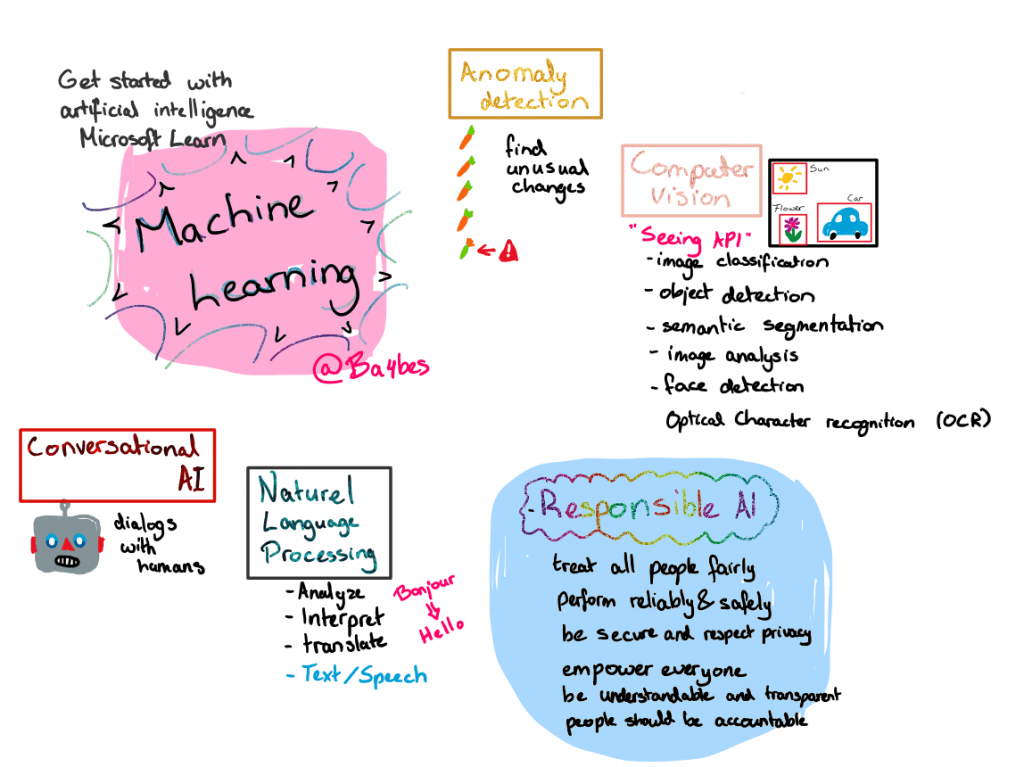This month, I worked on the #TheMVPChallenge to start learning AI through Microsoft Learn. This challenge consists of a collection of modules themed around AI & Data in Azure. I want to share why I did it, how I did it and what it has given me. I hope to inspire you to learn something new yourself. To help with that I also have created a challenge for you to get into Serverless & AI!
But Why?
So why do I want to learn about AI? It’s not a requirement for my job as an Azure consultant. But then again, my daily work involves Azure infrastructure. So although I don’t have to develop around AI, but I do get asked to create the infrastructure surrounding AI. To do that in the best way, I think it is important to know the basics about the AI offerings in Azure. This challenge is perfect for that.
And while my job isn’t about AI, it is something that I have seen before, when working with Azure Functions. When it comes to automation, especially cognitive services are very useful to know about.
How it began
I don’t start completely blanco and I want to share how I got in touch with AI before.
Attend sessions that are outside of your comfort zone
This is something I love to do when I visit large events. I always try to go to a session about something I am interested in, but haven’t worked with. I’ll visit a level 200 talk and often I will lose track somewhere in the middle. That is ok, I find I will always pick something up.
And then when I see the technology later, it isn’t completely new to me. I recognize elements and that really helps to move further. It makes it feel less intimidating. I have done this with AI in the past, including hosting sessions in my own user group ddog.
Serverless challenges
I have finished two Serverless challenges: 25 days of Serverless in December 2019 and Seasons of Serverless in December 2020. While I was working a lot with logic apps and Azure functions, both challenges touched up with Cognitive services and simple Machine Learning. As time was of the essence, I pretty much failed my way to success (which in my opinion is a great way to start of). So while I was not really sure what was going on, I did get in touch with these technologies and learned that they are not scary or intimidating at all.

Setting a goal
Starting with this new challenge, I wanted to set a goal for myself, to give myself a little extra motivation.
My short term goal is to understand enough AI to use the Azure AI services and be able to support the infrastructure that surrounds it. With the challenge done I’m going to try to get the AI-900 certification.
My long time goal is very practical. I have about 2 decades of photo’s scattered around on my computer that are mostly saved in folders based on the date. For years I have wanted to have an easier way to categorize them. So in the future I would like to try to create modules that can tag my photo’s and knows which of my homes is shown or if it shows my current dog or the previous one.
This is quite a big project and is going to take some time, but it would really be cool to at least have the basics down to make a start.
Using Microsoft Learn
This challenge takes place in Microsoft Learn. I first got in touch with Learn when it was launched at MSIgnite 2018. Although it was a bit bumpy when it first started out, I have always loved the concept. The variation between theory and practice works wonders when learning new skills. New modules are still being added at a high pace, so there is always something new to learn
I want to walk you through some tips that helped me in this challenge. Remember though, that everyone has a different learning style. What works for me might not work for you, so don’t feel like these are written in stone. Try it out and if it doesn’t work for you, look for something else that does.
Small modules make the task seem less big
Any learning path consists of a lot of modules, which can feel a bit intimidating. The good thing is that almost all modules are stand alone and can be used to see as small tasks within the big challenge. So 20 hours of learning might seem scary, but how about just doing a 30 minutes module today? That is doable right? After every module you get a “yay it’s finished” moment, which always feels good.
Losing track but keep going
When following a learning path, a large amount of information is coming at you. When I am on a roll and do a few in a row, I sometimes find I can get lost in the exercises. Especially when there is a lot of code involved, I can go into the I-have-no-idea-what-I’m-doing-mode.

And that’s fine. It happens. Depending on how I feel, I pick one of two strategies:
- Pause, open a second tab and start researching every step. Take a look at the choices that are in the steps, what other options are available and what happens if I pick them? This can be very time consuming but you can learn a lot with it, so it does pay back.
- Keep going with this exercise. Honestly, I just keep following the guide and hope it works in the end. Sometimes I can pick it up somewhere along the way, sometimes I don’t. And that is ok as well, because I will still have seen every part of the exercise and I will have learned something, even if it doesn’t feel like it. After the exercise is done, it is time for a break :).
The benefit of repetition
Some modules in Microsoft Learn are a lot alike. This is actually a good thing, because repetition can be an amazing tool when learning something. This also means it isn’t so bad if you lose track now and then. I do recommend to choose the order of your modules wisely. If you do 2 or 3 modules in a row that are a little repetitive, you might zone out at the end. But if you mix them up, it can really help with memorizing the material.
Leveling up and getting trophies
I mentioned before that every module ends in a “yay it is finished” moment. I love the gamification of Microsoft Learn, I think it is so motivating. You get awards, trophies and you can level up. It seems a bit silly, but it sure is motivating!
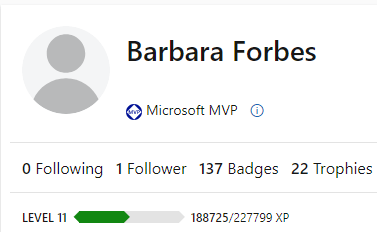
Results and takeaways
With the challenge finished, let’s look at what it has brought me.
For one, I am very proud of myself for completing the challenge in the allotted time.
I now feel confident that I could achieve the AI-900 certification.
Because it’s fun, I have made a little sketchnote of the first module I did.
Using it at my daily work
An awesome thing actually happened: I could use it in my daily work immediately! I was helping out with a project with a Bot service and although my part was focussed on Azure infra, my new knowledge came in handy right away and I felt a lot more prepared.
Starting out with the project
After that, I couldn’t resist doing a quick test to see if my photo goal would be reachable. So I opened up customvision.ai and uploaded 60 pictures of my previous dog Plukkie (who sadly is no longer with us) and my current dog Cody. I tagged them all in an object detection model and started training.
When training was done, I tested it with some pictures
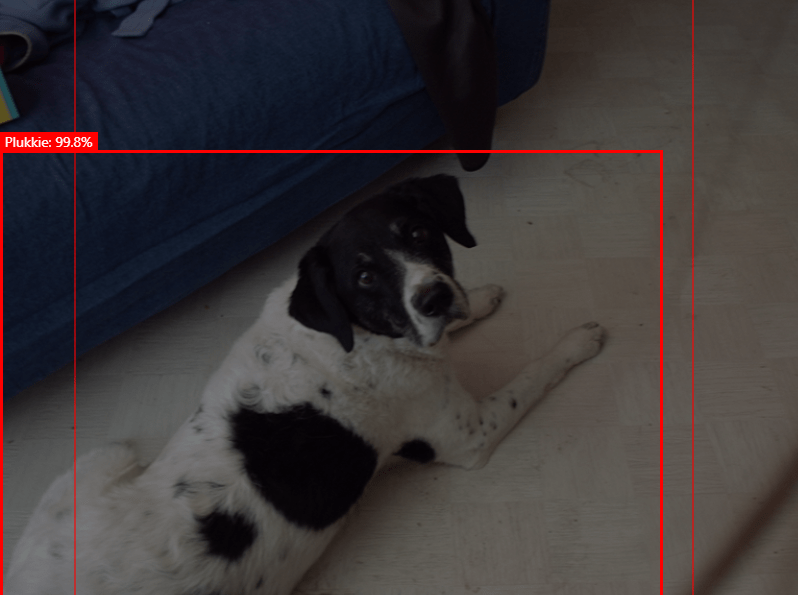
First test is going well, that is indeed my old dog Plukkie.
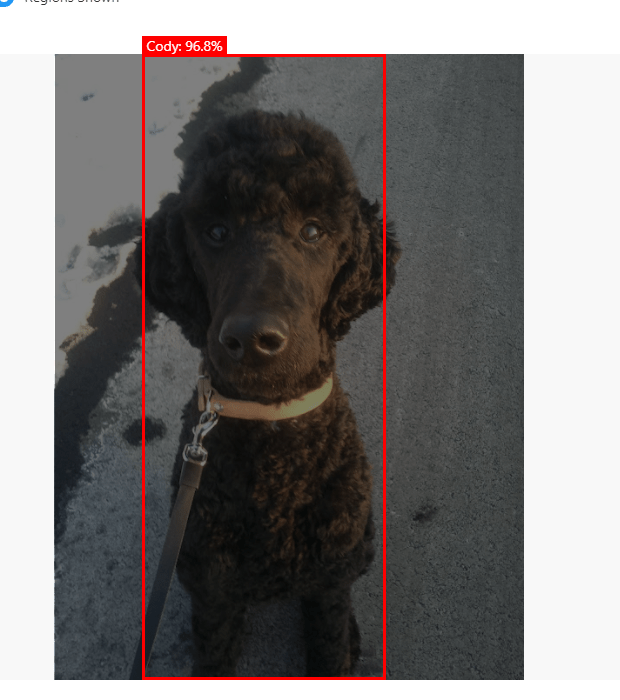
And it recognized Cody as well.
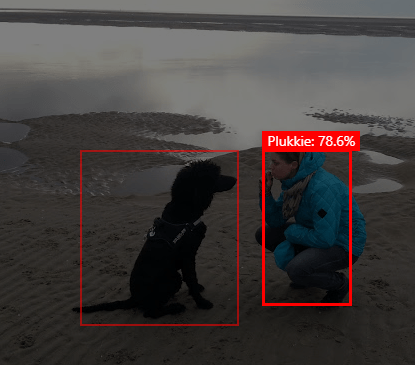
A thougher picture didn’t go that well, when it defining me as Plukkie. It classified Cody as Plukkie as well. So I guess I will have to invest more than 15 minutes to make it more reliable :). But the starting point is there!
My challenge for you: ⚡Serverless meets AI🤖
As I love challenges, I have created a challenge of combined challenges!
I have created a collection you can follow, combined with some challenge assignments that you can use to put your new knowledge into practice. As I love serverless technology and how it combines with Cognitive services, I have created a list where you first learn about Azure Functions and then about different Cognitive services.
You can complete the Microsoft Learn collection and after that try the challenges, or you can mix them up. To help with that, I made an overview of what challenge can be done after what module.
The assignments I have used in my list are not created by me, but the two challenges I talked about before:
- 25 days of Serverless. This challenge was initiated by the Microsoft Azure Advocates and I participated in December 2019. I have selected the assignments that use cognitive services. Not all of them are at this point available in the Microsoft repository. If they are not, I have linked to the description I copied and pasted in my own repository.
- Seasons of Serverless. Another challenge by the Microsoft Azure Advocates, in december 2020 this time. I selected the challenge that uses Machine learning
Below, find a list of all the challenges and the Microsoft Learn modules that fit the subject. To find the full collection with all the links in Microsoft Learn, click here.
Conclusion
So this is my story on how I spend last month learning AI through Microsoft Learn. I hope this helps you find your own challenge. What are your greatest tips on learning something new? Let me know in the comments!

